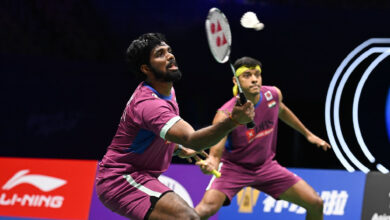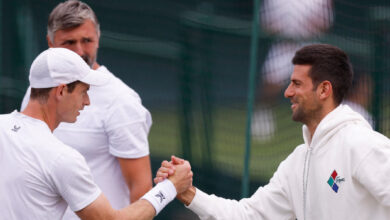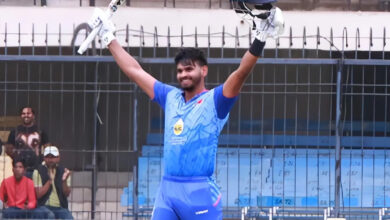Nat Sciver-Brunt: ‘Cricketers get emotional. If you keep bottling it, you will break at some point’ | Cricket News

Natalie Ruth Sciver-Brunt would’ve played cricket even if she didn’t get paid for it.There are shades of that Thierry Henry response to the question, what would you have been if not a professional footballer? ‘An amateur footballer.’ The former France and Arsenal forward might give us one of his animated eyebrow raises knowing that for Sciver-Brunt, football was the first choice. Until it wasn’t.“ the time I was 13, I joined a (cricket) club that was local to my house at the time.” she tells The Indian Express. “Really, I would’ve been happy to play it just because I loved it. And then, the ECB decided to offer some professional contracts. Amazingly, my name was on the l.” Good for England that it was.Since her debut in July 2013, only four players have scored more in Women’s ODIs than Sciver-Brunt. A quarter of which she did in 2022, the year of the last 50-over World Cup. A couple months after which she was appointed as the captain to lead England in the first-ever women’s tournament at the Commonwealth Games in Birmingham. Days later, she would finish as the third-highest run getter in The Hundred. And then came the announcement. Nat Sciver-Brunt won’t be playing the ODI and T20I series against India. But with all the runs her side, why take a break then?
“I guess that was the big thing at the time. The cricket might’ve been doing alright but the person behind it, wasn’t,” Sciver-Brunt shares. “When cricket is something you’ve done for 15-20 years of your life, it can be such a comfort zone. You’re in a routine. Go to training. It’s matchday: do your batting warm up, bowling and everything else. Once you’re into that routine, it’s not a problem. But when you can’t switch off, when the pressure is on and you feel like you’re being judged all the time, and you never really have a break from that….for me, just everything escalated into a moment. There was probably a build up of five or six months that had been really tough.”
While Brunt’s performances with the bat in the lead up to the period may have been some of her finest – like the two hundreds against Australia at the World Cup, including in the final – the fact that they weren’t able to get her team across the line didn’t help. “I wasn’t able to refresh myself right down to zero every time. Every time I went back into the pressure cooker and felt at 25 percent, 20, 19, 17, close to the edge that I could no longer handle it.”
Alright to pause
She wasn’t alone. Australia women’s captain Meg Lanning had also announced taking a break from professional sports following her side’s CWG gold medal win. Fellow English, Ben Stokes had alarmed cricket adminrators retiring from ODIs, suggesting playing all three formats in modern day and age had become ‘unsustainable’. Virat Kohli admitting he wasn’t able to touch his bat echoed a similar sentiment. All of it pointing to the rather obvious needle in the haystack of fixtures: it was alright for cricketers to just pause.
Natalie Ruth Sciver-Brunt’s performances with the bat in the lead up to the period may have been some of her finest. (Reuters)
“The moment when I felt like I couldn’t perform, couldn’t be in the team environment anymore, I just took myself out of it and went home,” Sciver-Brunt says. “I didn’t have to think about getting my kit back on to go training. Trying to perform in front of the crowd. I did everything else to take myself away from the sport and really reflect on how it made me feel. Normal things like taking my dog for a walk, doing chores around the house, things you’ve to put on hold all the time because you have to go away.” One crucial detail. “I didn’t find a method or anything like that but doing all that allowed me to reflect a bit more.”
Being a professional cricketer, Sciver-Brunt believes one can’t suppress their emotions all the time. Becoming a perfect role model for those watching from the stands and the screens can have its own toll. Pent-up emotions held back may come out as they did in Indian captain Harmanpreet Kaur’s case last month during the Bangladesh tour. “Cricketers get emotional. You can’t suppress it all the time. It’s so hard. If you keep bottling it up, you will break at some point,” Kaur’s Mumbai Indians teammate says.
Natalie Ruth Sciver-Brunt and Harmanpreet Kaur. (File)
“As professionals or competitors for any team, you just want things to be fair so that the two teams can compete. It’s a hard one because you can’t be calm and collected all the time. For me, that’s what I want to be but I’m emotional underneath all of that. It’s just, I can hide it but other people’s personalities don’t allow that. We’ve got to be embracing every individual, however they deal with pressure. Some get angry at themselves. Some people can cry,” she adds.
At the right place, at the right time
Keeping calm following her brief hiatus from the sport is what helped Sciver-Brunt get through what she describes as a ‘pretty mad’ first-ever Women’s Premier League experience. One that saw her close Mumbai Indians’ title win with a boundary via a player of a match performance in the final. The effects of the season that ended in March are still visible on the 30-year-old’s social media, her comments section on Instagram flooded with MI fans and hashtags.
“Yeah, that’s been a huge part of my social media, but also of where the growth of women’s game in the world has been,” she says. “It still feels a bit unbelievable that it happened. That I got bid for the auction Mumbai Indians. The price that I got sold for (joint second-most expensive player). Having the competition that I did….you couldn’t have asked for it to be any better. That plays into feeling that I’m at the right place at the right time.” It’s been a feeling she’s had for a while now. Since she became one of the first 18 players to be awarded professional contracts the ECB in 2014.
“For me, having started playing cricket when there were not that many people interested in playing or watching the women play, it feels weird to be the centre of attention,” Sciver-Brunt concedes. “But we’ve seen over the last few years in England, how much women’s sport has grown in popularity. How special it is in capturing the imagination of people watching.”
This was evidenced in the recent Women’s Ashes which attracted a record 1,10,000 people to the stadiums and 5.3 million views on broadcast. It would see the reigning, defending T20, ODI, and Commonwealth champions, Australia Women lose a first 50-overs bilateral since 2013.
“I think that’s the template we want to play in. The way this series was marketed! The way that it was so competitive. The way that so many people came to watch us. I would love it if that’s how every series went,” says England’s chief protagon who scored back-to-back hundreds in the ODIs. These, to add to her previous tally of two centuries, that account for all four scored an opposition batter against Australia Women since 2020.
For some time now, England have been pipped as the team best suited to dethrone Australia in the women’s cricket hegemony. With their best batter against the champions back to her very best and the 2024 World Cup on the horizon, it may as well be the time for a paradigm shift in the sport. “I feel very lucky to be a cricketer at this time.”







